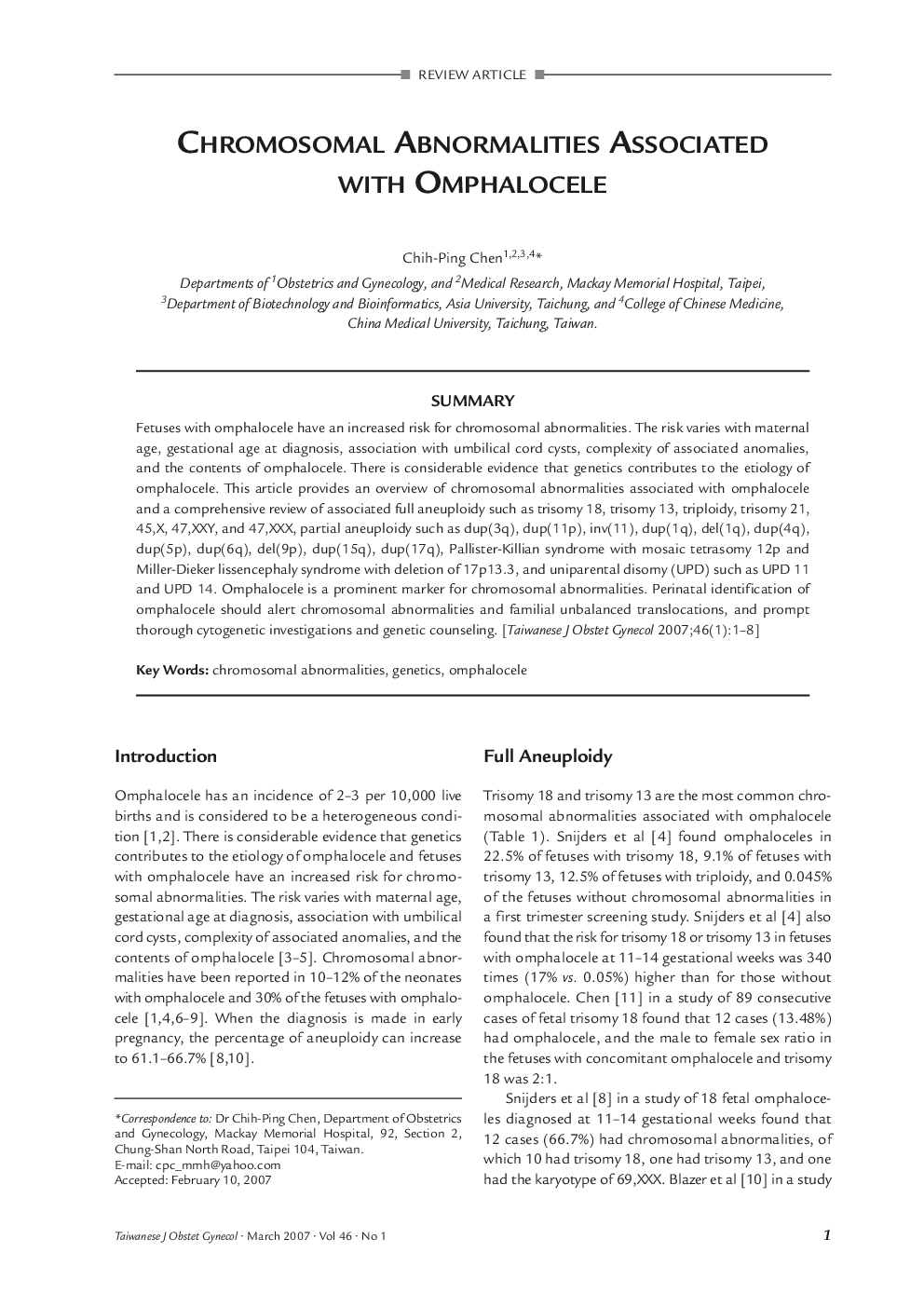| Article ID | Journal | Published Year | Pages | File Type |
|---|---|---|---|---|
| 3976123 | Taiwanese Journal of Obstetrics and Gynecology | 2007 | 8 Pages |
SummaryFetuses with omphalocele have an increased risk for chromosomal abnormalities. The risk varies with maternal age, gestational age at diagnosis, association with umbilical cord cysts, complexity of associated anomalies, and the contents of omphalocele. There is considerable evidence that genetics contributes to the etiology of omphalocele. This article provides an overview of chromosomal abnormalities associated with omphalocele and a comprehensive review of associated full aneuploidy such as trisomy 18, trisomy 13, triploidy, trisomy 21, 45,X, 47,XXY, and 47,XXX, partial aneuploidy such as dup(3q), dup(11p), inv(11), dup(1q), del(1q), dup(4q), dup(5p), dup(6q), del(9p), dup(15q), dup(17q), Pallister-Killian syndrome with mosaic tetrasomy 12p and Miller-Dieker lissencephaly syndrome with deletion of 17p13.3, and uniparental disomy (UPD) such as UPD 11 and UPD 14. Omphalocele is a prominent marker for chromosomal abnormalities. Perinatal identification of omphalocele should alert chromosomal abnormalities and familial unbalanced translocations, and prompt thorough cytogenetic investigations and genetic counseling.
